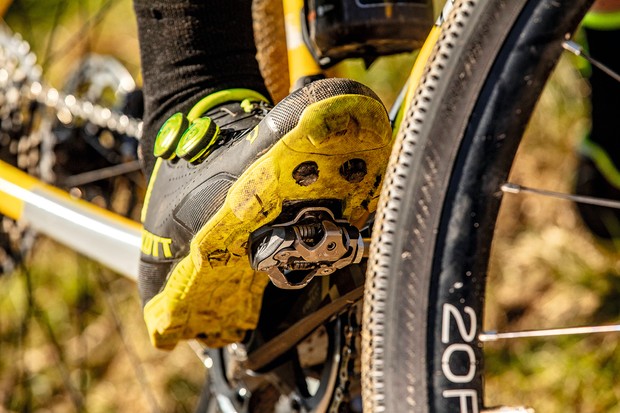While it’s one of the less contentious subjects in cycling, the quest for the perfect pedals can greatly impact your riding experience.
Initially, everyone starts out using flat pedals, and many continue to utilize them for mountain biking and commuter biking. However, a considerable number of riders eventually transition to clipless pedals, especially for road cycling.
Why is this the case? In this article, we’ll explore the advantages and disadvantages of flat pedals versus clipless pedals. Additionally, we’ll examine the reasons why each system may be preferred for activities such as mountain biking, road cycling, gravel riding, and cycle commuting.
First and foremost: Understanding clipless pedals and their connection to your feet
Toe clips were the initial method used to secure feet to pedals. Will Poole / Our Media

To begin, let’s clarify the distinction between clipless pedals and flats.
Despite their name, clipless pedals actually involve clipping your shoes into them, firmly attaching your feet to the pedals.
The term “clipless” arises from the abandonment of the traditional toe clips and straps that were previously used by road riders to secure their feet in place.
While concerns about being unable to disengage from clipless pedals may exist, they are much safer compared to the toe clips they replaced.
In 1984, the French brand Look introduced clipless pedals, replacing toe clips with a cleat mechanism that connects to a locking system integrated into the pedal. This update offers a more secure and comfortable connection for riders.
Types of Clipless Pedals
There are two primary variations of clipless pedals: single-sided and double-sided. When it comes to clipless pedals, Shimano stands out as the leading brand and the mastermind behind SPD and SPD-SL single- and double-sided pedal models.
Variety in Pedal Design
Apart from the fundamental distinctions between clipless and flat pedals, there exists a multitude of designs for both types of pedals.
Flat pedals typically feature a generous surface area equipped with metal pins that securely anchor your foot. Specifically designed for mountain biking, these pedals rely on the grip provided by mountain bike shoes. On the other hand, commuter and versatile pedal designs are characterized by a smaller pedal body and less aggressive grips.
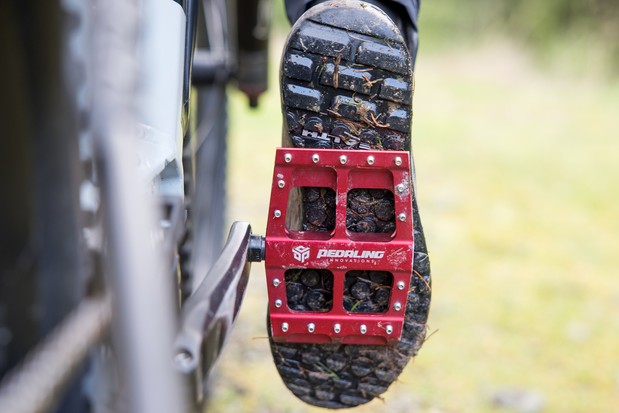
Double-sided clipless pedals, specifically engineered for mountain biking, come in various platform sizes. Some are substantial enough to be used without cleats, while others are compact or even non-existent, requiring you to clip in for optimal performance.
Conversely, single-sided clipless pedals cater to road riders and prioritize stability with their wider platform. These pedals boast a minimalist design to reduce weight but can be challenging to ride without cleats. Thus, the use of compatible cycling shoes is necessary.
Proper Setup of Clipless Pedals
Accurate and precise adjustment of clipless pedals is of utmost importance.
Cleats can be rotated to achieve an optimal position that ensures your comfort during rides. It is recommended to fine-tune this position according to your preferences.
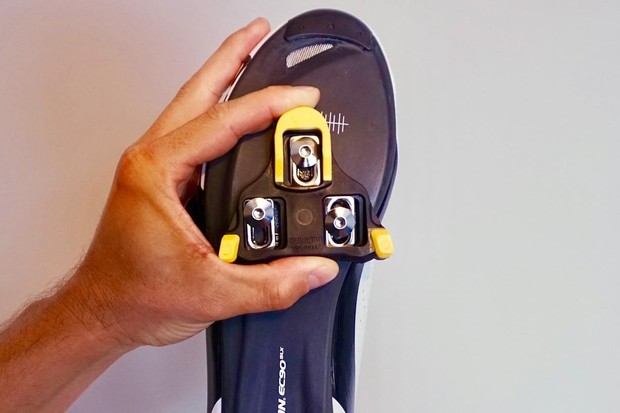
Always take into account your riding style and personal comfort when configuring the alignment of your clipless pedals.
Flat Pedals vs Clipless Pedals: Choosing the Right Option
With flat pedals, you have the freedom to position your foot anywhere on the pedal platform, allowing for maximum customization and comfort. On the other hand, clipless pedals limit the range of foot movement, which can lead to discomfort if not set up correctly.
It is important to ensure proper setup to avoid any potential discomfort during or after your rides. One common culprit of discomfort is incorrectly set up cleats. This misalignment can result in knee pain and other issues related to your body’s alignment while cycling.
Another factor to consider is the amount of float, which refers to the degree of movement allowed by your cleat and pedal combination. The level of float should be determined based on your specific needs and preferences. Most clipless pedal systems offer the option to adjust the float by using different cleats or making necessary modifications.
Are Clipless Pedals More Efficient?
In the world of professional cycling, clipless pedals have gained dominance across all disciplines. However, there are still a few mountain bikers who prefer using flat pedals for competitive riding.
Scientific research suggests that when it comes to lower-intensity riding, there is no significant difference in pedaling efficiency between flat pedals with regular trainers and clipless pedals with specialized cycling shoes. Tests conducted on stationary bikes have shown that both setups exhibit similar levels of efficiency.
However, outdoor sprint tests have revealed that when maximum power output is required, clipped-in cycling shoes offer a notable advantage. On average, they increase sprint power by 16.6%, compared to a combination of trainers and flat pedals. Toe clips and straps provide a lesser advantage, increasing maximum power by around 9.7%. Therefore, if you engage in more intense or competitive cycling, you are likely to benefit from using clipless pedals and cycling shoes.
Considering more than just efficiency
When it comes to mountain biking, road cycling, and commuting, there are factors that go beyond efficiency. Let’s explore some of the reasons why you may choose either clipless or flat pedals.
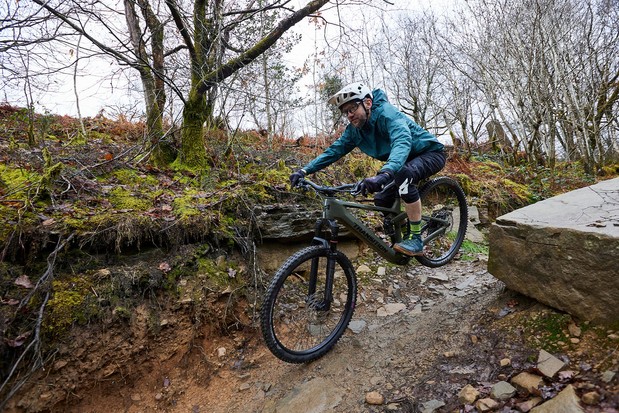
Flat pedals for mountain biking
While clipless pedals are widely used in road cycling, mountain bike riders have differing opinions on whether to use clipped-in or flat pedals. Even our own BikeRadar contributors, Rob Weaver and Tom Marvin, have different preferences.
Rob is a fan of flat pedals and emphasizes the importance of using the correct pedal and shoe combination to enhance your connection with the bike and better feel the terrain beneath you.
Using flat pedals gives you the ability to quickly put your foot down for added stability in turns or wet conditions. For those who enjoy riding jumps or in bike parks, adjusting your foot position can help you maintain balance.
Flats also aid in improving technique. For example, if you want to learn how to bunny hop, relying solely on pulling up on the pedals won’t do the trick.
However, Rob does mention a few drawbacks of using flat pedals. He points out that pedaling can be less efficient and powering through rough terrain can be more challenging. Additionally, there is a risk of your feet being bumped off the pedals and the pain of a spiky pedal hitting your shins can be quite intense.
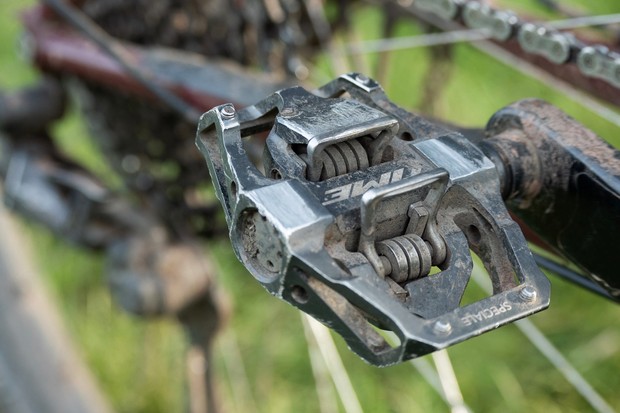
Clipless pedals for mountain biking
On the other hand, Tom predominantly uses clipless pedals. He appreciates the security they provide during descents, the efficient power transfer, and the consistent foot placement they offer. However, he does note that initiating on technical terrain or clipping in while descending can be more difficult.
Even though double-sided mountain bike pedals are designed to clear mud effectively, they can still accumulate mud or stones in adverse conditions, affecting the pedal’s engagement mechanism.
Clipless pedals can present challenges when used in muddy conditions. THE MERIDA EX ENDURO / Jon Woodhouse In order to prevent them from becoming loose or causing injury, it is vital to properly configure your pedals cleats.

Renowned elite athlete and coach Tom Bell – who excels at the highest international level – also prefers riding with clipless pedals.
As a cross-country racer, a discipline where clipless pedals reign supreme, he highlights that many downhill and trail riders opt for flat pedals. However, in XC, the potential for enhanced power transfer achieved by being clipped in plays a significant role. This advantage largely stems from the rigid carbon soles incorporated in cleat-compatible footwear.
According to Bell, it is crucial to practice the act of clipping in and out. This allows you to develop the muscle memory necessary for promptly and accurately engaging your cleat with the pedal.
Comparing Flat and Clipless Pedals for Road Cycling
Look, being the inaugural company to introduce clipless pedals, holds a prominent position in the industry. Ben Delaney / Future Publishing When it comes to road cycling, the majority of roadies utilize single-sided pedals specifically designed for this discipline.

Finding the Perfect Pedals
They have a strong preference for clipless pedals because when combined with rigid road cycling shoes, they create a secure connection between the foot and the bike. Furthermore, professional riders exclusively use them, and everyday cyclists like us enjoy imitating their choices.
However, for beginners, using clipless pedals requires a certain level of skill. It involves flipping the pedal over while starting to ride and engaging the slots in the shoe’s cleat with the pedal.
Additionally, we have all experienced the struggle of being unable to unclip the shoe from the pedal in time, resulting in a fall on the road. It’s considered a rite of passage for road cyclists.
Nevertheless, road cyclists don’t frequently clip in and out, so the initial inconvenience is not a major issue.
Moreover, they don’t usually walk long distances in their cycling shoes, so the wear on the plastic cleats and the awkward walking style caused by the pronounced cleats are not significant concerns, unless you reach a café.

Optimal Options for Different Types of Riding
For gravel riding, a suitable choice is using two-bolt mountain bike cleats along with compatible shoes and pedals. This is because these cleats are more likely to get covered in mud. They are also favored by some road riders.
However, there is no compelling reason why road cyclists shouldn’t use double-sided pedals. Tom Bell, for instance, continues to use mountain bike pedals on his road bike because he is accustomed to them from XC racing.
Double-sided pedals are also ideal for touring cyclists, gravel riders, and cyclocross racers who often need to move around off the bike and want the ability to walk or run with ease.
While clipless pedals, regardless of being single- or double-sided, are widely popular on the road, new cyclists may benefit from starting with flat pedals as they become familiar with riding a road bike.
This way, they can easily put a foot down when necessary without having to learn how to unclip, and they can focus on mastering the bike’s handling.
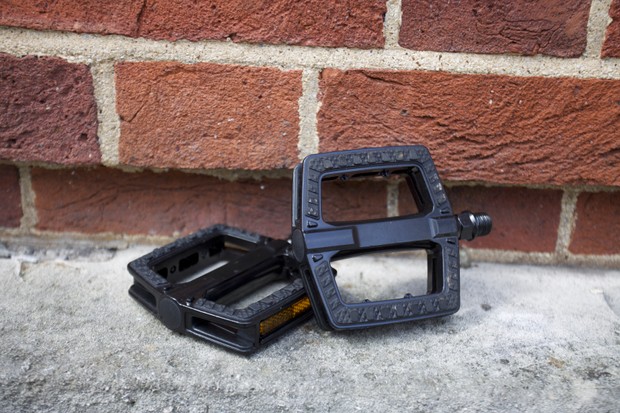
Furthermore, some cyclists may discover that pedaling on flat pedals on a road bike is almost as efficient.
Comparison: Flat Pedals vs Clipless Pedals for Commuting
Advantages of Flat Pedals
- Easy to use and suitable for urban commuting
- Quick and effortless foot engagement and disengagement at frequent stops
- More convenient for walking with compatible shoes
- A large platform and pin design provide a secure grip
Advantages of Clipless Pedals
- Efficient acceleration when clipped in
- Double-sided pedals allow easy re-engagement
- Option to set lower disengagement force and multiple disengagement directions
- Small and recessed cleat allows easy walking and maneuvering off the bike
Considering Flat Pedals for Gravel Riding

Gravel riders often choose mountain bike clipless pedals but flat pedal options are also common for off-bike exploration. There are even specialized gravel-specific shoes and pedals available, offering larger interfaces for a road-pedal feel while riding.
Pros and Cons of Flat Pedals
Pros
- Easier to use
- Quick foot engagement and disengagement
- Less susceptible to mud and dirt buildup
- Allows adjustment of foot placement and balance, especially in mountain biking
Cons
- Possible foot slippage off the pedal platform
- May be less efficient compared to clipless pedals
Pros and Cons of Clipless Pedals
Pros
- Improved pedaling efficiency
- Consistent foot placement
- Secure and stable connection to the bike
Cons
- Steep learning curve for new cyclists
- Difficulties in walking with road shoes and cleats


